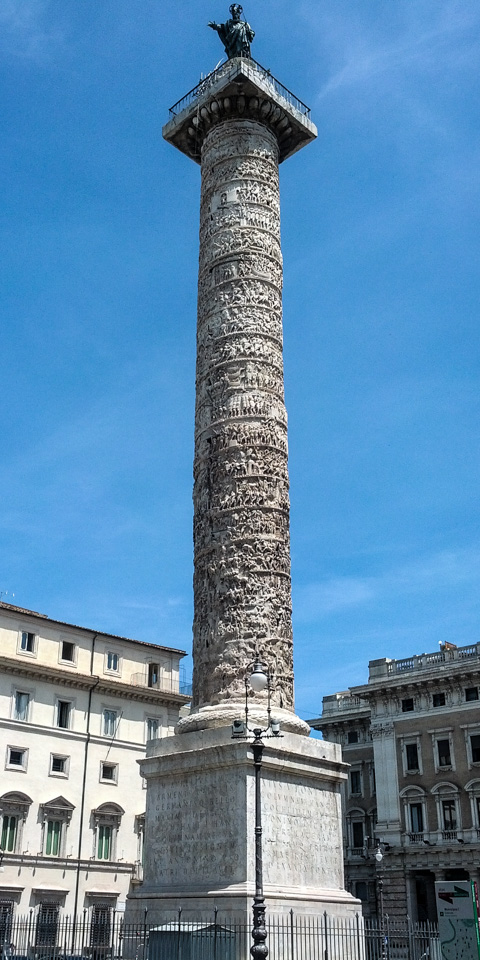Pillars of victory, also known as memorial columns were occasionally erected to record the triumphs of victorious achievements of an emperor.
They were built to honor an emperor and generally described a great victory as the Emperor won in the name of the Roman Empire. They thus acted as propaganda in particular, which would show the emperor’s power to the citizens and secure his legacy.
 Fragment of the Column of Marcus Aurelius.
Fragment of the Column of Marcus Aurelius.
The spiral picture relief tells the story of Marcus Aurelius’ Danubian or Marcomannic wars, waged by him from 166 to his death. The story begins with the army crossing the river Danube, probably at Carnuntum. A Victory separates the accounts of two expeditions. The exact chronology of the events is disputed; however, the latest theory states that the expeditions against the Marcomanni and Quadi in the years 172 and 173 are in the lower half and the successes of the emperor over the Sarmatians in the years 174 and 175 in the upper half.
 The Column of Marcus Aurelius in Piazza Colonna
The Column of Marcus Aurelius in Piazza Colonna
Ancient Pages. (2015). What Function Did Towering Columns Have In Ancient Rome? | Ancient Pages. [online] Available at: http://www.ancientpages.com/2018/06/02/what-function-did-towering-columns-have-in-ancient-rome/ [Accessed 4 May 2019].
Beckmann, Martin (2002). “The ‘Columnae Coc(h)lides’ of Trajan and Marcus Aurelius”. Phoenix. Classical Association of Canada. 56 (3/4): 348–357.
